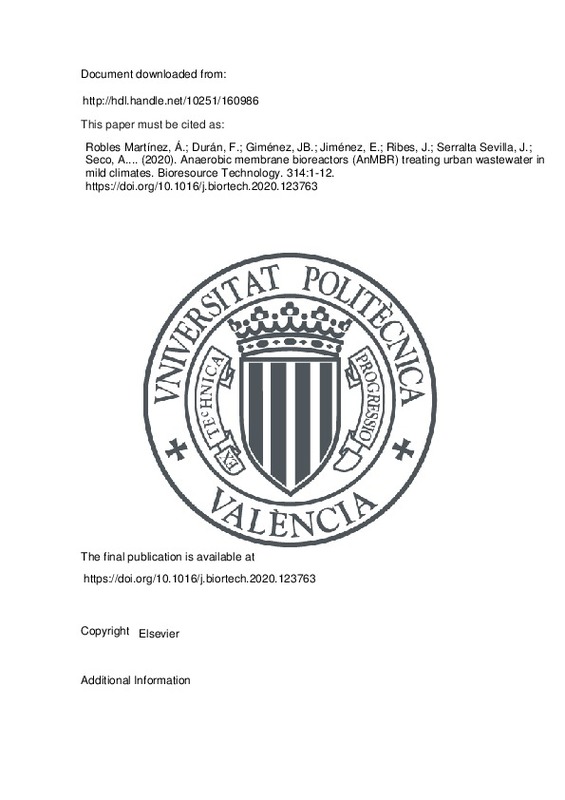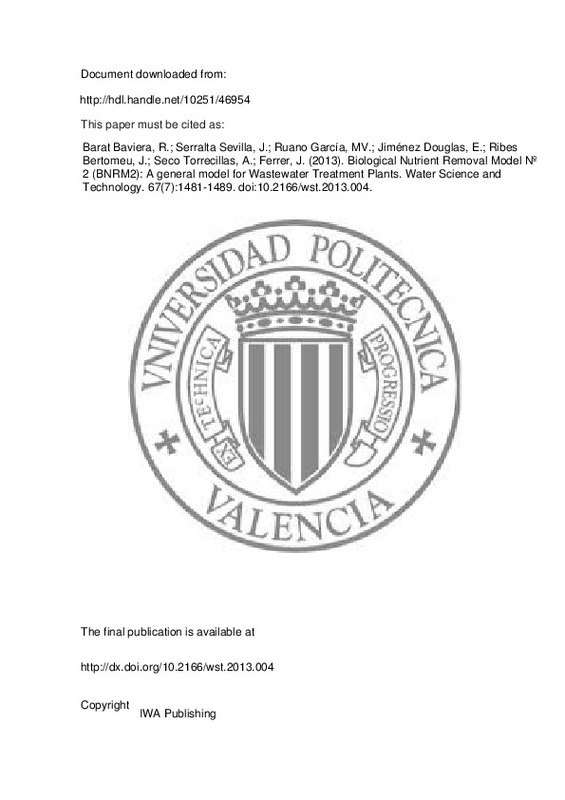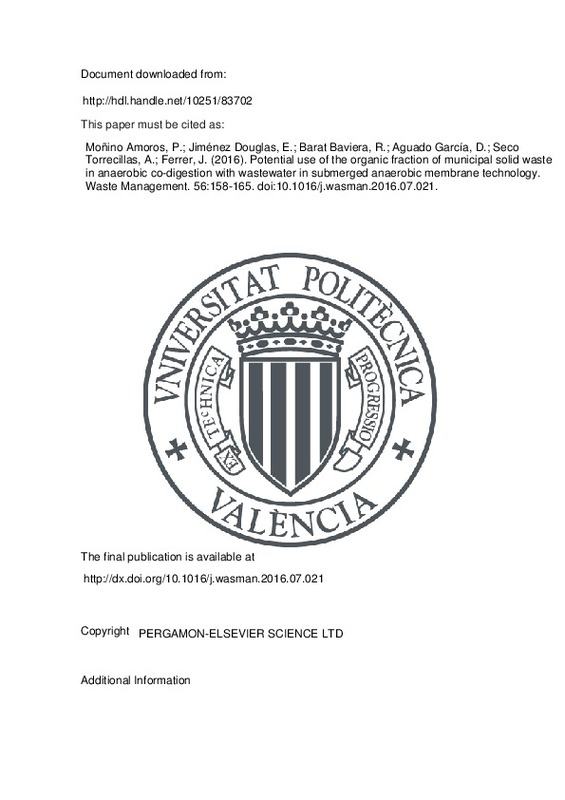

Listar por autor "Jiménez Douglas, Emérita"
RiuNet: Repositorio Institucional de la Universidad Politécnica de Valencia
- RiuNet repositorio UPV
- :
- Listar por autor
JavaScript is disabled for your browser. Some features of this site may not work without it.
Buscar en RiuNet
Listar
Mi cuenta
Ayuda RiuNet
Admin. UPV
Listar por autor "Jiménez Douglas, Emérita"
Mostrando ítems 1-7 de 7
-
Robles Martínez, Ángel; Durán, Freddy; Giménez, Juan Bautista; Jiménez, Emérita; Ribes, Josep; Serralta Sevilla, Joaquín; Seco, Aurora; FERRER, J.; Rogalla, Frank (Elsevier, 2020-10)[EN] Feasibility of an AnMBR demonstration plant treating urban wastewater (UWW) at temperatures around 25-30 degrees C was assessed during a 350-day experimental period. The plant was fed with the effluent from the ...
-
Barat Baviera, Ramón; Serralta Sevilla, Joaquín; Ruano García, María Victoria; Jiménez Douglas, Emérita; Ribes Bertomeu, Jose; Seco Torrecillas, Aurora; FERRER, J. (IWA Publishing, 2013)This paper presents the plant-wide model Biological Nutrient Removal Model No. 2 (BNRM2). Since nitrite was not considered in the BNRM1, and this previous model also failed to accurately simulate the anaerobic digestion ...
-
Claros Bedoya, Javier Alfonso; Jiménez Douglas, Emérita; Aguado García, Daniel; FERRER, J.; Seco Torrecillas, Aurora; Serralta Sevilla, Joaquín (IWA Publishing, 2013)Ammonia-oxidizing bacteria (AOB) are very sensitive to environmental conditions and wastewater treatment plant operational parameters. One of the most important factors affecting their activity is pH. Its effect is ...
-
Jiménez Douglas, Emérita; Giménez García, Juan Bautista; Ruano García, María Victoria; FERRER, J.; Serralta Sevilla, Joaquín (Elsevier, 2011-07-29)The effect of pH and nitrite concentration on the activity of the nitrite oxidizing bacteria (NOB) in an activated sludge reactor has been determined by means of laboratory batch experiments based on respirometric techniques. ...
-
Jiménez Douglas, Emérita; Giménez García, Juan Bautista; Seco Torrecillas, Aurora; FERRER, J.; Serralta Sevilla, Joaquín (Elsevier, 2012-07-27)Respirometric techniques have been used to determine the effect of pH, free nitrous acid (FNA) and substrate concentration on the activity of the ammonium oxidizing bacteria (AOB) present in an activated sludge reactor. ...
-
Jiménez Douglas, Emérita (Universitat Politècnica de València, 2010-07-30)Los procesos biológicos en una EDAR consisten en transformaciones bioquímicas que realizan los microorganismos durante su crecimiento. La modelación matemática de estos procesos de crecimiento es fundamental para el diseño, ...
-
Moñino Amorós, Patricia; Jiménez Douglas, Emérita; Barat Baviera, Ramón; Aguado García, Daniel; Seco Torrecillas, Aurora; FERRER, J. (PERGAMON-ELSEVIER SCIENCE LTD, 2016-07)Food waste was characterized for its potential use as substrate for anaerobic co-digestion in a submerged anaerobic membrane bioreactor pilot plant that treats urban wastewater (WW). 90% of the particles had sizes under ...
Mostrando ítems 1-7 de 7

Universitat Politècnica de València. Unidad de Documentación Científica de la Biblioteca (+34) 96 387 70 85 · RiuNet@bib.upv.es








